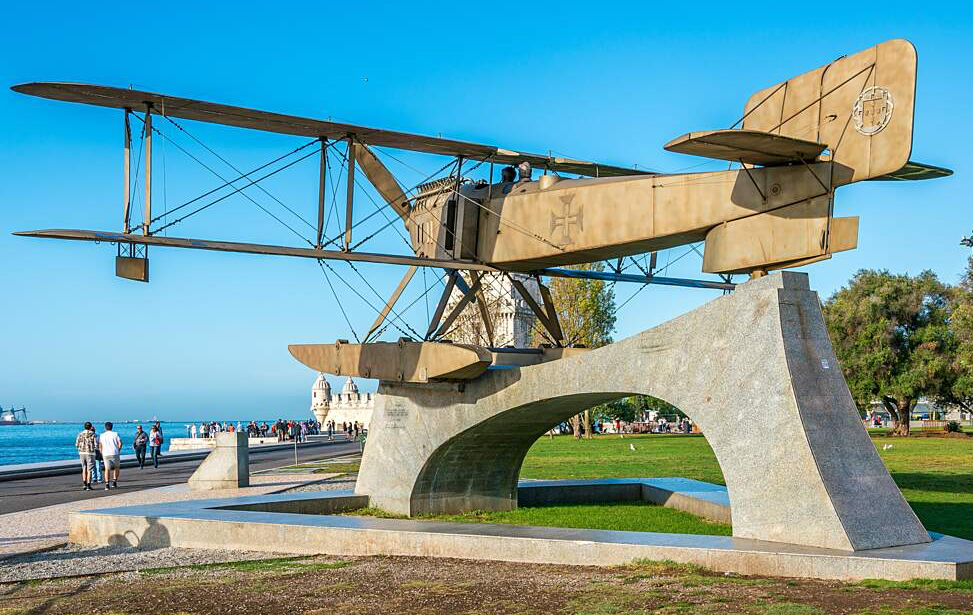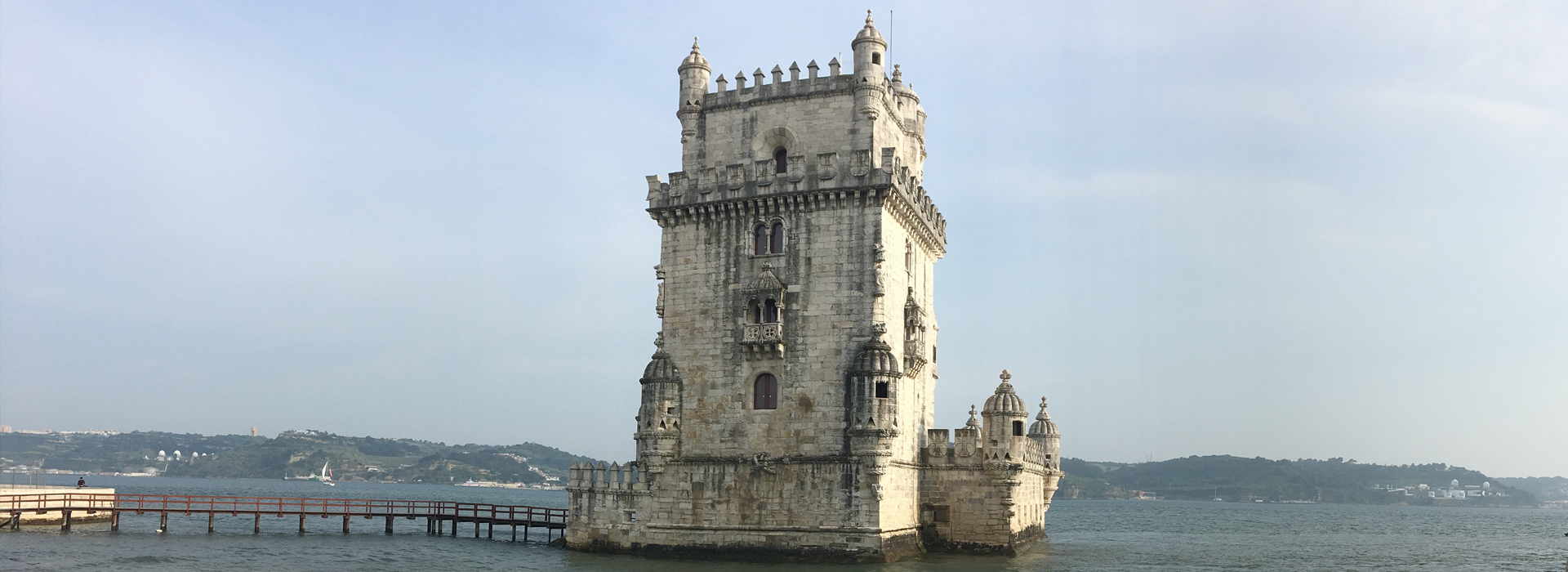
Torre de Belém (Belém Tower)
The Torre de Belém, or Belém Tower, stands as an iconic symbol of Lisbon's rich history and maritime heritage. This UNESCO World Heritage Site is located on the northern bank of the Tagus River and is one of the city's most famous landmarks. Originally built in the early 16th century as a fortress to protect the entrance to Lisbon's harbour, the tower boasts a stunning blend of Manueline, Moorish, and Renaissance architectural styles.Visitors to Belém Tower can marvel at its ornate façade, which features intricate stone carvings, decorative battlements, and elegant turrets. Inside, you can explore the tower's multiple levels, including its vaulted rooms and spiral staircases, leading to panoramic views of the river and surrounding areas.
The Torre de Belém also holds historical significance as a launching point for many Portuguese explorers during the Age of Discoveries, including Vasco da Gama's legendary voyage to India.
Tourists can enjoy guided tours to learn more about the tower's fascinating past and its role in Portugal's maritime history. After visiting the tower, take a leisurely stroll along the riverside or enjoy a treat at the nearby Pastéis de Belém bakery for the famous custard tarts.
Belém Tower: Skip the line tickets

With this entrance ticket you can gain entry to the Torre de Belém at your leisure. Book with confidence with FREE CANCELLATION Buy online before you arrive to avoid queues and have the convenience of the e-ticket on your phone…
• The price includes a single entrance to the venue. Tiqets covers the cost of payment processing and provides you with customer service seven days a week.
• It is strictly forbidden to eat and smoke inside the tower
October to April, Tuesday to Sunday: 10h00 - 17h30
(last admission at 17h00)
May to September, Tuesday to Sunday: 10h00 - 18h30
(last admission at 18h00)
Mondays, CLOSED
Adult: €9.00, Child 0-12: FREE
Combined Ticket:
Mosteiro dos Jerónimos and Torre de Belém option available
Combined Ticket [ ► ]

HISTORY
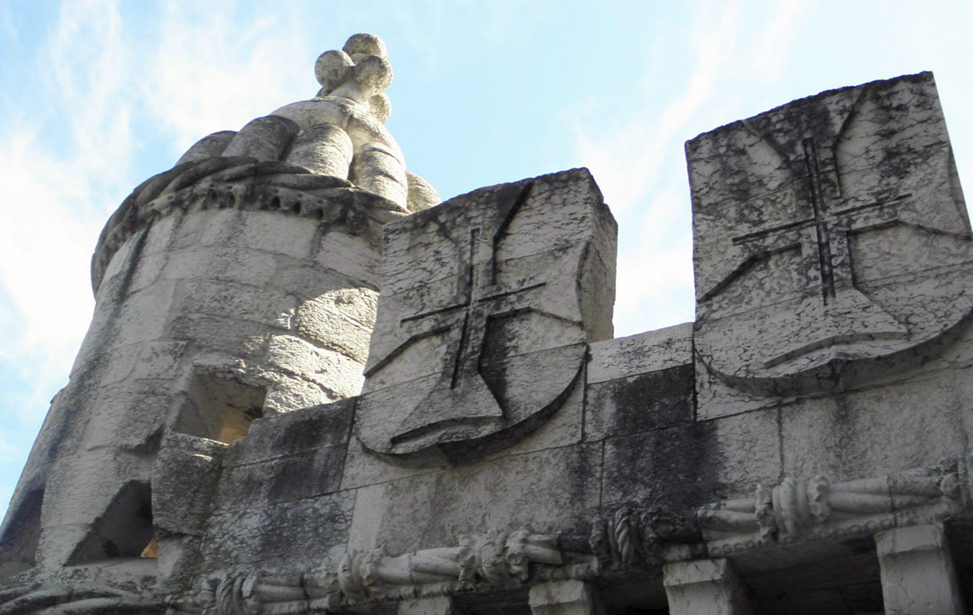
The tower's early days included acting as a stronghold under various commanders, including Gaspar de Paiva. Throughout its history, Belém Tower has played roles in multiple conflicts. It surrendered to the Spanish in 1580 and later served as a state prison during the Philippine Dynasty. During the Peninsular War, the tower housed troops and later imprisoned liberal opposition to King Miguel.
The iconic structure features distinctive elements such as rounded watchtowers, sculpted crosses of the Order of Christ, and a two-story building atop the rectangular bastion. Over the years, Belém Tower has undergone numerous restoration projects, culminating in its recognition as a UNESCO World Heritage Site. Today, visitors can enjoy this stunning piece of history and admire its architectural beauty.
Exterior
Closer inspection of the structure as a whole will reveal its two major parts, the irregular hexagonal bastion with the four-story rectangular tower perched on its northern flank. Mainly Manueline in style which is especially apparent in its elaborate rib vaulting, crosses of the Order of Christ, armillary spheres and twisted rope carvings. King Manuel I was a member of the Order of Christ and the cross of the Order is repeatedly used throughout the structure.

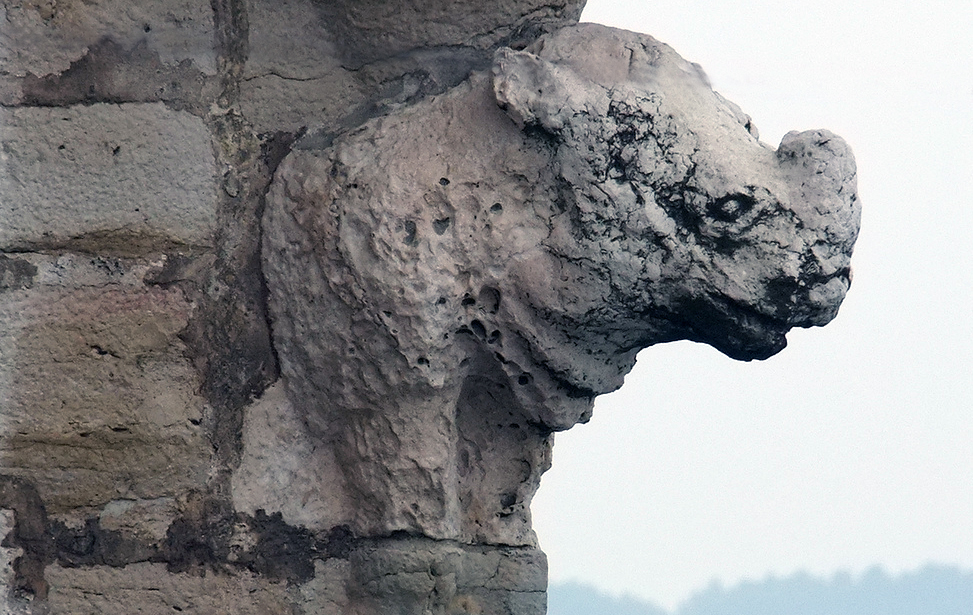
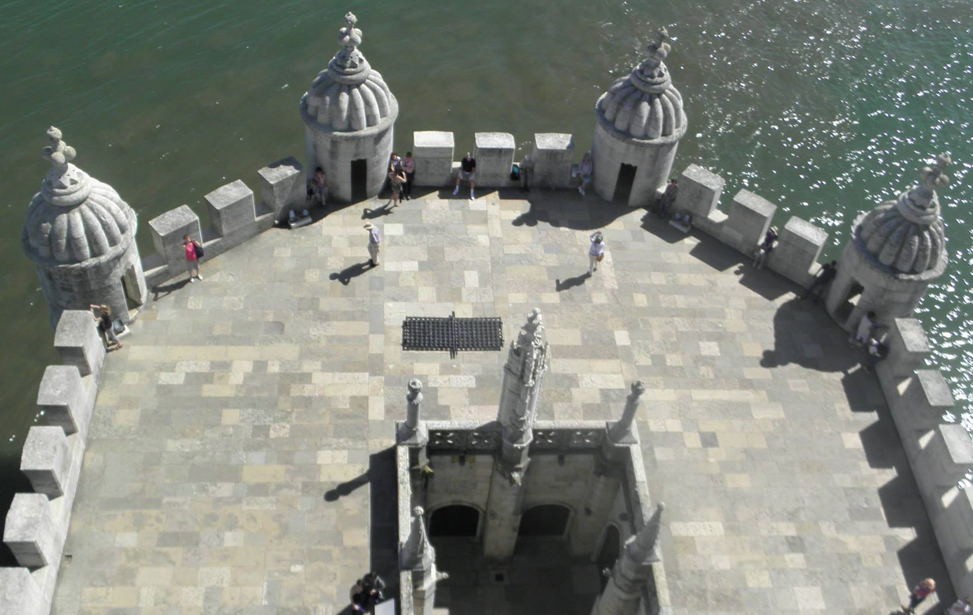
As one ascends the gangway to the drawbridge it's possible to notice plant motifs, surmounted by the Royal coat of arms and flanked by small columns, complemented with armillary spheres symbolising Portugal's nautical explorations. They were used on King Manuel I's banner to represent Portuguese discoveries during his rule. The guillotine gate entrance has a machicolation above the entrance hall through which missiles could be dropped on any assailant.

TOP BELÉM TOURS
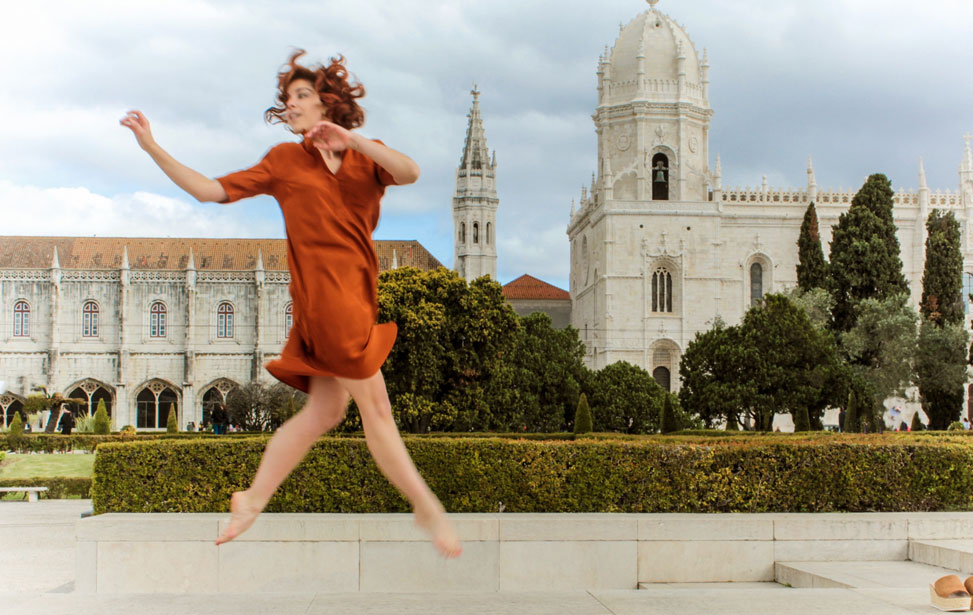
Belém Walking Tour and Jerónimos Monastery Ticket
Explore Lisbon's Age of Discoveries on this guided walking tour in Belém. Visit iconic sites like Belém Tower and enjoy skip-the-line access to the Jerónimos Monastery. Meet your guide in the Garden of Afonso de Albuquerque and travel back in time. Indulge in an authentic Pastéis de Belém and savour the famous egg tarts. Marvel at the late Gothic architecture of the UNESCO-listed Jerónimos Monastery.
Stroll along the river to the modern monument dedicated to Portuguese explorers. Enjoy breathtaking views where the Atlantic Ocean meets the Tagus River at Belém Tower. Create unforgettable memories and receive personalised recommendations for your Lisbon visit.
(233) | 5 Hr | ✔ Free Cancellation
Check Availability
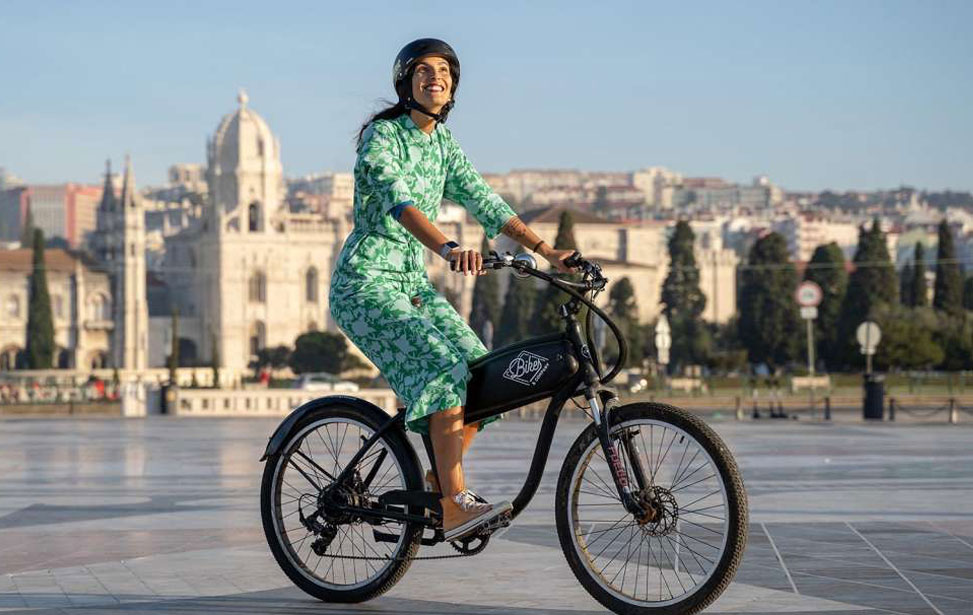
Electric Bike Tour by the River to Belém
Embark on a relaxing tour along Lisbon's riverside, starting in the cosmopolitan city centre. As you journey toward Belém, the vibrant energy of this European capital transitions into a more tranquil atmosphere. Travelling along the riverside provides an enjoyable journey filled with light, scenic landscapes, and lively city life. Belém offers history enthusiasts a glimpse into the Portuguese Discoveries, with its grand architecture and storied past. This neighbourhood was the launch point for many renowned explorers, shaping Portugal into the first global empire. This tour offers a harmonious blend of serenity and urban charm. Explore bustling riverfront esplanades, lush green fields, and talented local musicians, joggers, and artists capturing Lisbon's essence.
(388) | 3 Hr | ✔ Free Cancellation
Check Availability

Discovering Belém Tuk Tuk Tour
Explore the historic Belém district of Lisbon with a two-hour tuk-tuk tour along the Tagus River. Admire the magnificent Jerónimos Monastery and its beautiful church, showcasing Portugal's architectural brilliance.
Visit the iconic Belém Tower, where Portuguese explorers embarked on their 1500 journey that led to the discovery of Brazil. Discover the Padrão dos Descobrimentos monument, paying tribute to key figures of Portugal's Age of Discoveries.
Before leaving Belém, savour the delectable Pastéis de Belém, the famous custard tarts that are known worldwide. This tour offers a perfect blend of history, culture, and culinary delights, making it a must-experience in Lisbon.
(37) | 2 Hr | ✔ Free Cancellation
Check Availability
About
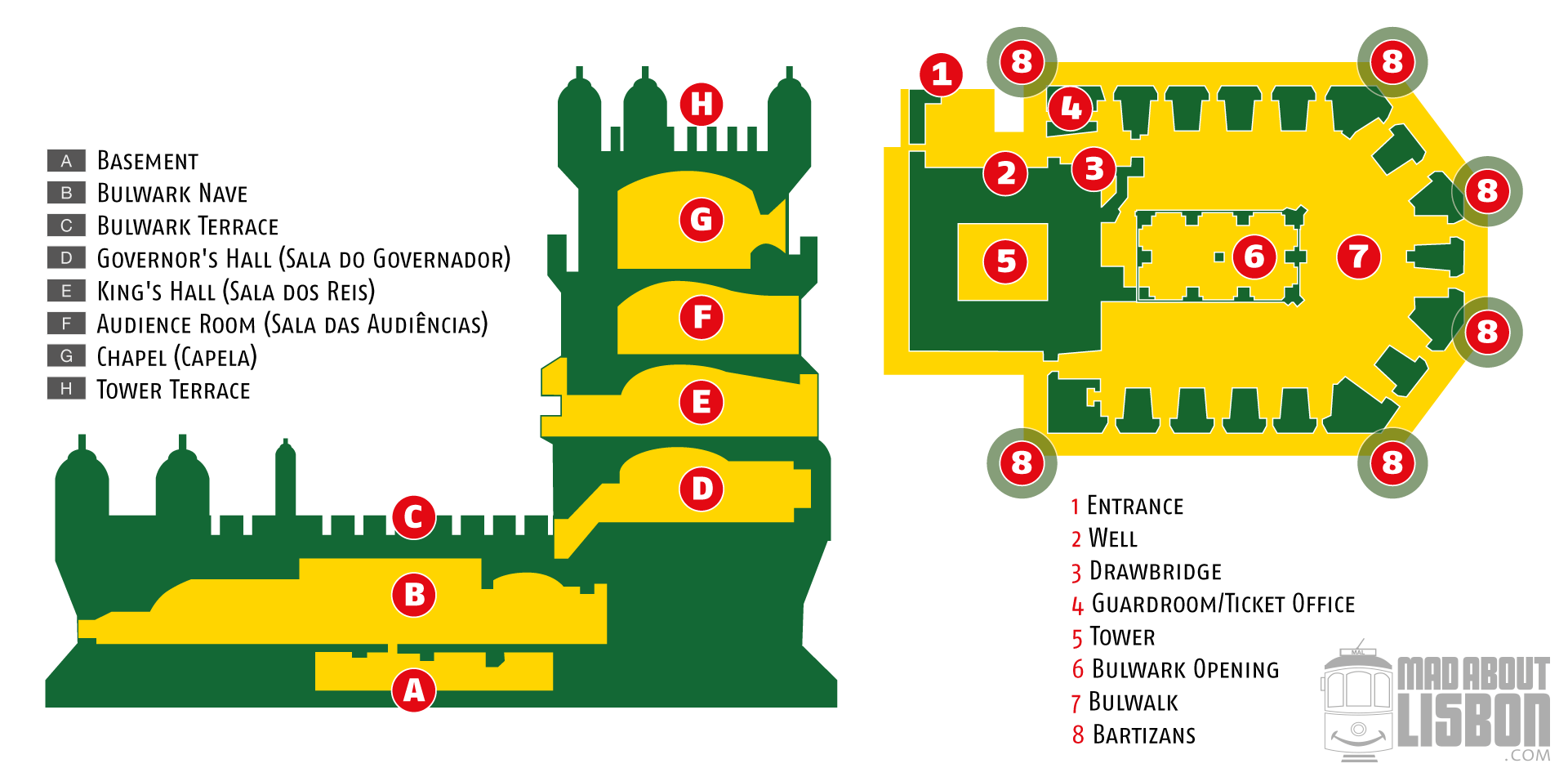
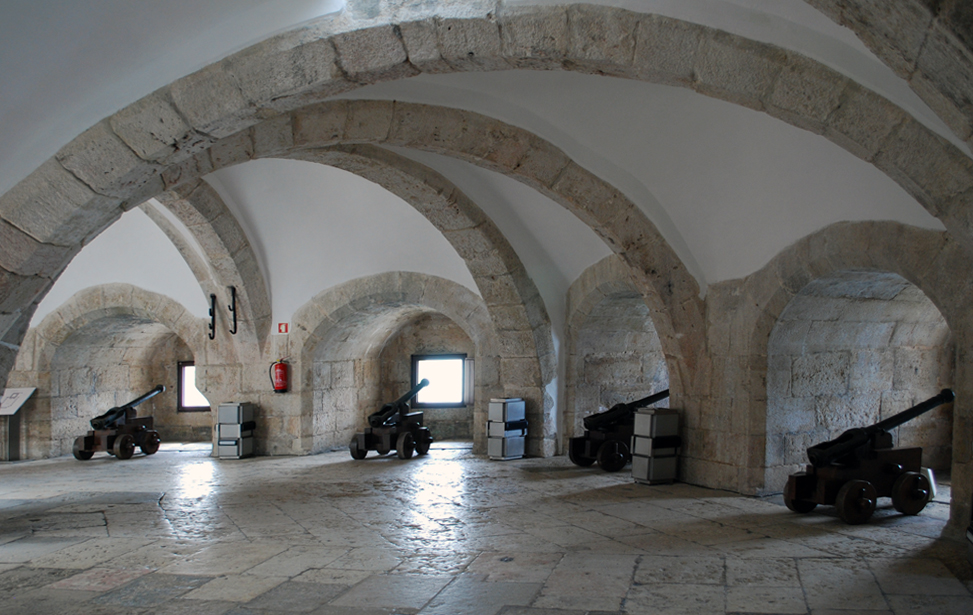
A & B
Bulwark Nave & Basement
Bulwark Nave
As you pass the ticket office, you enter into the interior of the bulwark, which houses the tower's artillery, 17 cannons pointing out over the estuary housed in their niches. The floor has an incline down from its centre outwards, giving the artillery a secure position and allowing for water to drain off that enters the tower. In the centre, there is a small, cloister-like, open patio, surrounded by Gothic arches. Two archways open to the main cloister on the north and south sides, while six broken arches stretch along with the eastern and western parts of the cloister. The open space served to dispel the smoke from cannon fire. The gun chamber ceiling is supported by masonry pilasters and Gothic rib vaulted spines.
Basement
The chambers under the Bulwark Nave accessed via a stairway on the north side were originally designed as artillery batteries and storage however in later times served as dungeons.
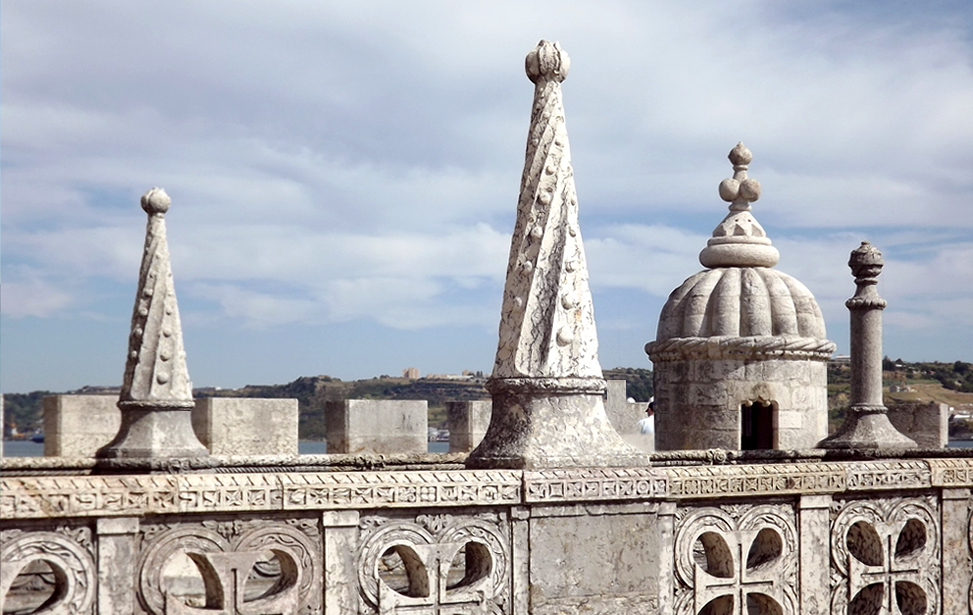
C
Bulwark Terrace
Back towards the entrance hall is a steep staircase that leads to the bulwark terrace. The bulwark terrace features six bartizans or projected turrets with lookout windows and ribbed cupolas at the vertices of the bulwark's polygonal form. In the terrace's centre, a parapet surrounds the opening into the Bulwark Nave. On the southern portion of the cloister terrace is an image of Virgin and Child. The statue of the Virgin of Belém, also referred to as Nossa Senhora de Bom Successo (Our Lady of Good Success), Nossa Senhora das Uvas (Our Lady of the Grapes) or the Virgem da Boa Viagem (Virgin of Safe Homecoming), is depicted holding a child in her right hand and a bunch of grapes in her left.
Standing on the bulwark terrace looking up the tower's southern and main façade one notices its rich decoration. The second-floor level features a loggia with seven perfect arches and adorned with a delicate openwork balustrade. Above this, we find King Manuel I's royal coat of arms flanked by armillary spheres and above these, a parapet the whole way around the tower decorated with crosses of the Order of Christ. It is through the south façade access is gained into the tower.
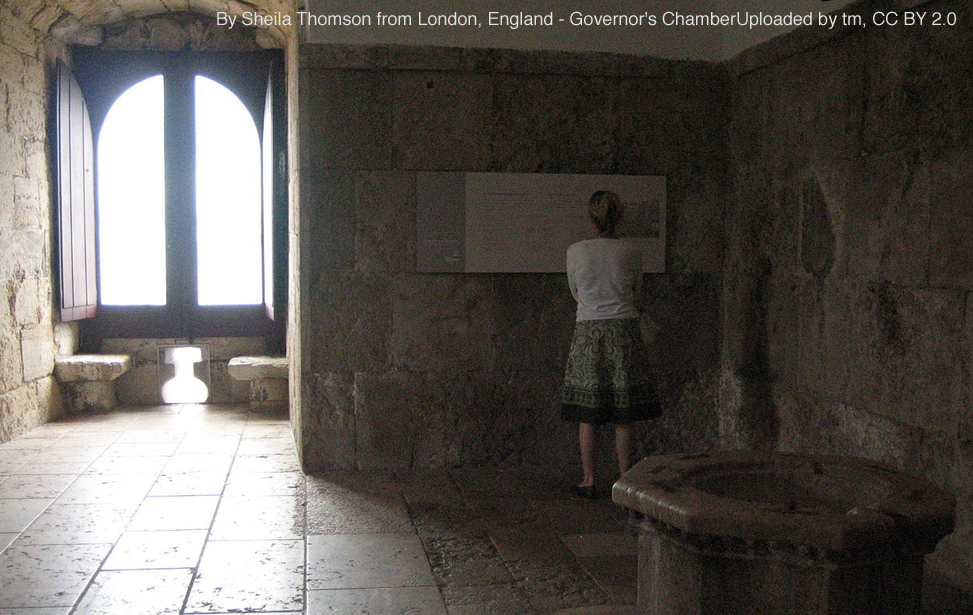
D
Governor's Chamber (Sala do Governador)
A narrow flight of stairs takes one to the first room of the tower, an octagonal space that opens into the cistern, while in the north-east and north-west corners there are corridors that link to the bartizans. The ceiling is vaulted and covered in lime mortar. The name of this room most likely comes from the fact that in the 16th century there was a position of Governor of the Tower of Belém, the first Governor being Gaspar de Paiva, appointed in 1521. The office was always one of great prestige and royal distinction.
The Governor represented the monarch and exercised military as well as administrative and judicial powers. A palace was built close to the Tower of Belém as a residence for the successive governors. On the left flank is a winding staircase that leads up to the top of the tower, providing access to the other rooms.
Please observe the traffic light system as the spiral staircase is narrow and can only carry one way thoroughfare.
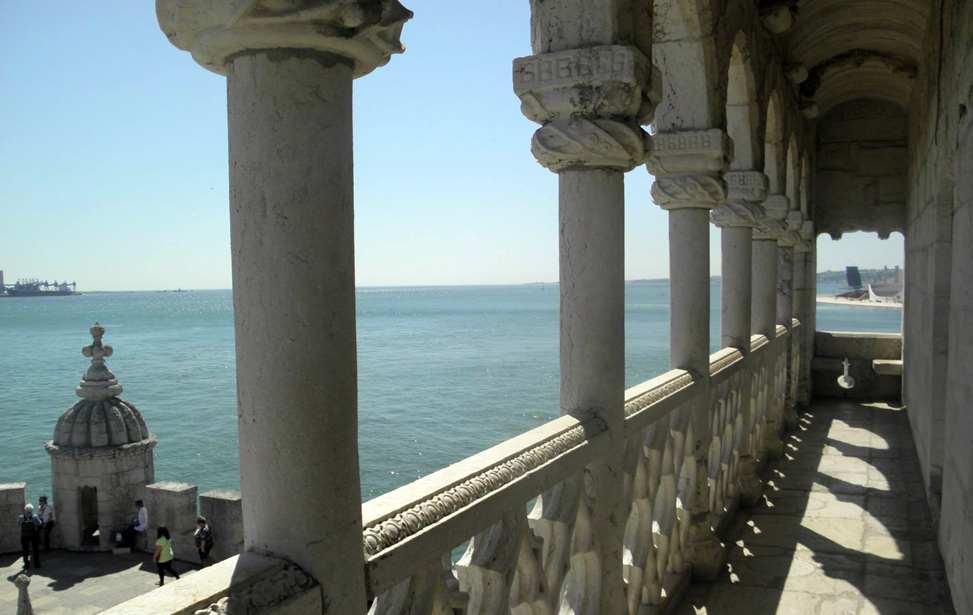
E
King's Chamber (Sala dos Reis)
This room leads on to a balcony on the tower's southern façade, which features eight round holes in the floor, known as machicolation, through which the garrison could fend off attacks by shooting or dropping projectiles. In the centre of each of the other three sides of the room doors open onto opulent balcony windows, that reveal graceful Venetian inspiration. In the northwest corner is an exceptional stone fireplace with a mantelpiece adorned with half-spheres and extends upwards to the F. Audience Room (Sala das Audiências) on the third floor. The fourth floor houses the tower's G. Chapel, famed for its vaulted ceiling with niches typical of the Manueline style and a second panoramic terrace.

H
Tower Terrace
The top of the tower affords views of the Tagus estuary and riverbanks, as well as Belém and its monuments. With one's back to the river and looking northwards from the terrace one can see the Chapel of St. Jerome (Capela de São Jerónimo) amongst the trees at the top of Avenida da Torre de Belém. It was built in 1514 on land belonging to the Hieronymite monks. To the right lies the Belém Cultural Centre and the Hieronymites Monastery.
When facing the river, one can identify on the other side of the river the ruins of the Old Tower, also known as St. Sebastian's Tower. Commissioned by João II and completed around 1480, this tower was part of the tripartite defence system for the Tejo estuary. Invaders entering the Tagus would thus sail into the crossfire between this tower and the Tower of Belém.
(last admission at 17h00)
May to September: Tuesday to Sunday: 10h00 - 18h30
(last admission at 18h00)
Mondays, CLOSED
Adult: €9.00, Child 0-12: FREE
Combined Ticket: Mosteiro dos Jerónimos and Torre de Belém option available.
ONLINE TICKET | With this entrance ticket you can gain entry to the Belém Tower at your leisure. Buy online before you arrive to avoid queues and have the convenience of the e-ticket on your phone…
Fast Track Ticket [ ► ]
Getting There
714, 727, 729, 751 | 15Linha Cascais trains stop at the Belém Train Station
Belem River Station: Hop On, Hop Off Boat
Contact Details
Avenida Brasília, 1400-038 Lisbon, Portugal.
38° 41' 29.5"N | 09° 12' 57.9"W | +351 213 620 034
mjeronimos@igespar.pt | Website


 Lisbon Card Discounts
Lisbon Card Discounts



